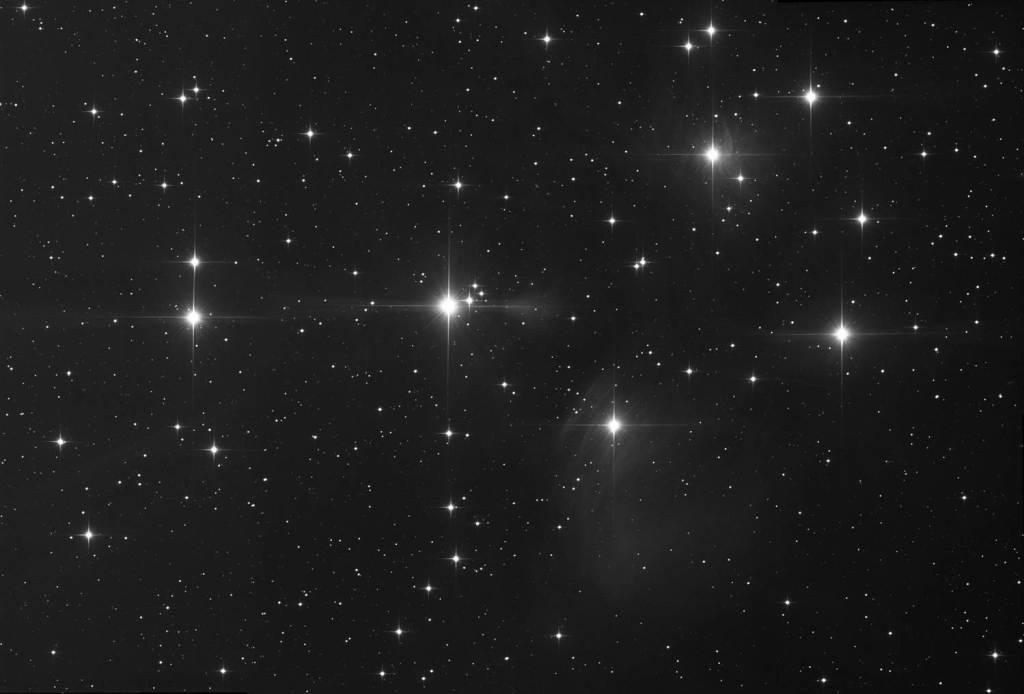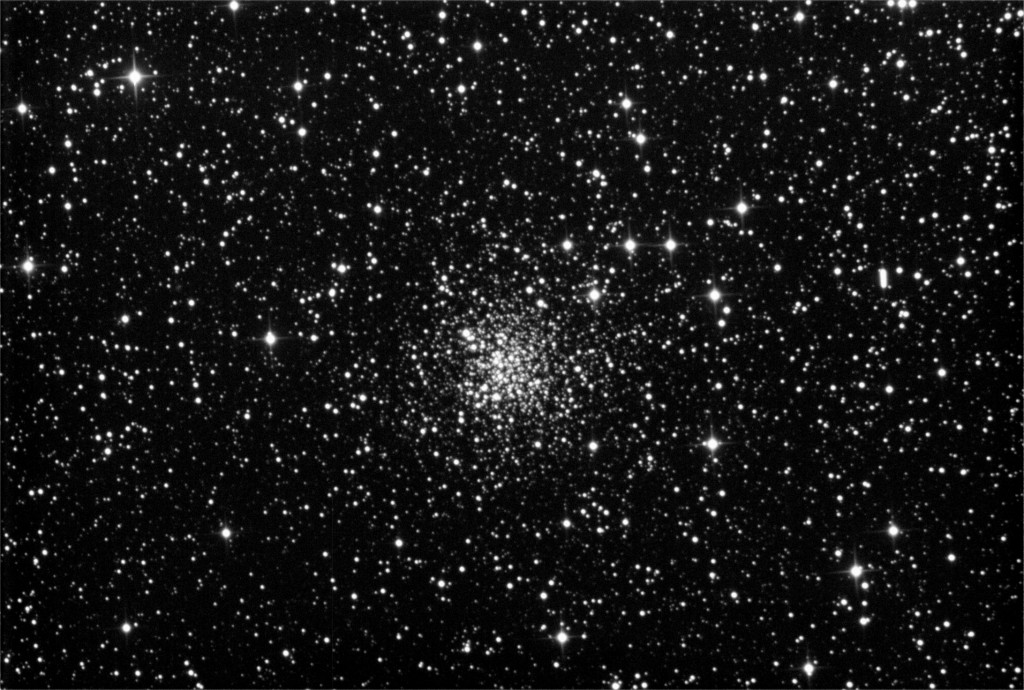Once again the PTO archive provides this image. Often misidentified as the Little Dipper, The Pleiades (M-45) is an asterism in the constellation Taurus.

Since this cluster of stars is very bright and a very prominent group in the sky, it is featured in many of the world’s cultures’ literature and folklore.
- To the Greeks the stars represent the ‘Seven Sisters’. These were the seven daughters of Atlas (a Titan) and Pleione (a sea-nymph).
- To several Native American tribes the cluster was seven wives who husbands rejected them because they constantly ate onions. The wives ran away but once they were gone, the husbands relented. So now, the husbands (the Hyades cluster) forever chase after their wives (the Pleiades cluster).
- The Japanese word for the cluster is “Subaru” and a stylized representation of the cluster is used as the emblem on the cars of the company of the same name.
- The Bible mentions them 3 times in Amos 5:8; Job 9:9; and Job 38:31; for example:
Amos 5:8 – Seek him that maketh the seven stars and Orion…
This open star cluster is ‘only’ 100 million years old or so. But, compared to the estimated 4.5 billion year old Sun, this cluster is just an youngster. Analysis of the cluster shows an estimated 1,000 stars as members and it has an estimated distance of 444 Ly. The group does not have enough mass to remain gravitationally bound for long and is destined to slowly drift apart. At one time the nebulosity that is apparent in the image was thought to be the remains of the cloud of gas and dust that the stars were born in, but it is now known that the cloud is unrelated and the stars just happen to be passing through it.
Although the cluster is a small group, it is larger than my camera/telescope field of view. The image above is a mosaic of 4 different exposures combined to capture the entire asterism.
